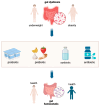Understanding Stunting: Impact, Causes, and Strategy to Accelerate Stunting Reduction-A Narrative Review
- PMID: 40362802
- PMCID: PMC12073730
- DOI: 10.3390/nu17091493
Understanding Stunting: Impact, Causes, and Strategy to Accelerate Stunting Reduction-A Narrative Review
Abstract
Stunting is a major global health concern, particularly in low- and middle-income countries, due to its persistently high prevalence. It often originates from chronic malnutrition during the critical first 1000 days of life. Maternal and child nutrition are critical determinants of a child's growth and development. This article aimed to explore the impact, causes, and evidence-based strategies to accelerate the reduction of stunting incidence worldwide. This review was undertaken with sources from PubMed, Scopus, Google Scholar, Science Direct, and MEDLINE from October 2024 to January 2025. This review was undertaken with sources from PubMed, Scopus, Google Scholar, Science Direct, and MEDLINE from October 2024 to January 2025 using the keyword "Stunting", "Causes of stunting", "Stunting Impact", "Stunting Intervention", and "Stunting Prevention". The findings highlight the multifactorial causes of stunting, including maternal malnutrition, inadequate breastfeeding and complementary feeding, poor sanitation, and socioeconomic factors. Stunting is associated with impaired linear growth, cognitive deficits, gut dysbiosis, endocrine disruption, anemia, and increased risk of chronic diseases later in life. Addressing stunting demands multisectoral strategies focusing on maternal and child nutrition, infection prevention, improved WASH (Water, Sanitation, and Hygiene) practices, and socioeconomic support. The evidence presented may guide policy development and targeted interventions to prevent stunting and its long-term effects.
Keywords: children; dysbiosis; growth failure; stunting; undernutrition.
Conflict of interest statement
The authors declare no conflicts of interest.
Figures









References
-
- WHO . WHO Child Growth Standards: Length/Height-for-Age, Weight-for-Age, Weight-for-Length, Weight-for-Height and Body Mass Index-for-Age: Methods and Development. World Health Organization; Geneva, Switzerland: 2006.
-
- Fleming T.P., Watkins A.J., Velazquez M.A., Mathers J.C., Prentice A.M., Stephenson J., Barker M., Saffery R., Yajnik C.S., Eckert J.J., et al. Origins of lifetime health around the time of conception: Causes and consequences. Lancet. 2018;391:1842–1852. doi: 10.1016/S0140-6736(18)30312-X. - DOI - PMC - PubMed
-
- Stephenson J., Heslehurst N., Hall J., Schoenaker D.A.J.M., Hutchinson J., Cade J.E., Poston L., Barrett G., Crozier S.R., Barker M., et al. Before the beginning: Nutrition and lifestyle in the preconception period and its importance for future health. Lancet. 2018;391:1830–1841. doi: 10.1016/S0140-6736(18)30311-8. - DOI - PMC - PubMed
Publication types
MeSH terms
LinkOut - more resources
Full Text Sources
Medical

